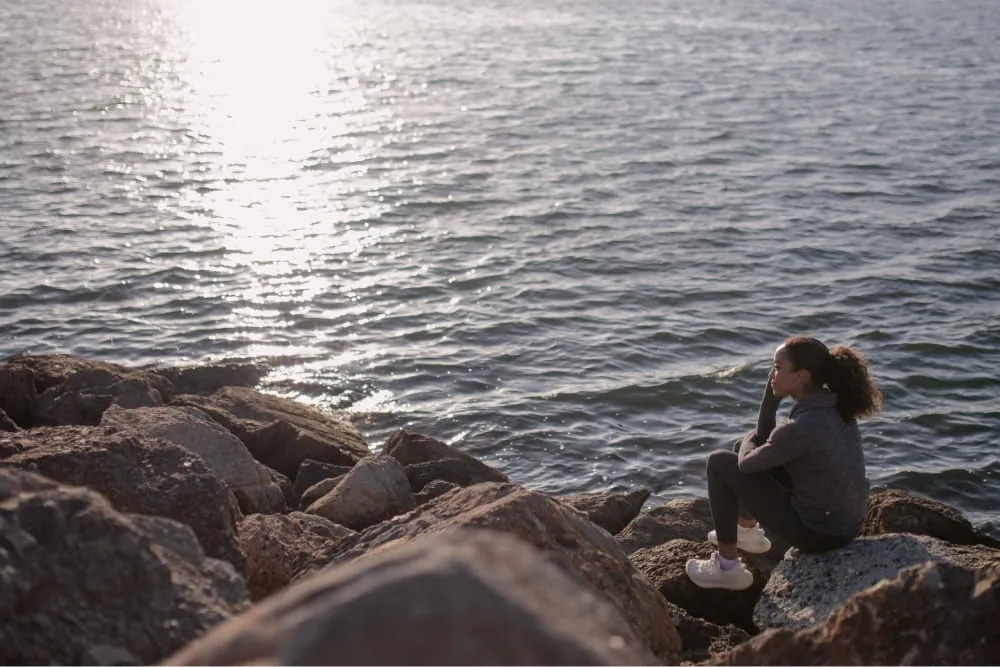What is jaundice?
Jaundice is a health condition caused by the build-up of bilirubin, a yellow substance produced by red blood cells.1 When too much of this substance enters the bloodstream, it can cause the skin or the whites of the eyes to appear yellow.
Bilirubin is released into the bloodstream when red blood cells die. Normally, the yellow substance is filtered out by the liver, but if there’s a problem that gives the liver trouble keeping up with this responsibility, bilirubin can build up. An excess of the substance in the blood is what creates that yellow tinge.2
Several factors can make the liver struggle with filtering bilirubin, including:1,2
- Gallbladder problems, like gallstones
- Alcohol-related liver disease
- Hepatitis
- Sickle-cell disease
- Pancreatic cancer or pancreatitis
- Blocked bile ducts
- Certain medications, like steroids, that are linked to liver disease
Anorexia nervosa, especially severe anorexia, can also contribute to issues with the liver, which may result in skin symptoms like jaundice.
Anorexia skin discoloration: What’s the connection between AN, the liver, and jaundice?
Jaundice is frequently connected to the functions of the liver, which can also be impacted by anorexia nervosa in a number of ways.
Along with the other issues that can cause problems with the liver's filtering functions, the complications of an eating disorder like anorexia nervosa can also lead to abnormal liver function. Research shows that AN can cause inflammation in the liver, as well as an excess of liver enzymes.3
These dermatologic signs of liver damage are more likely to be seen in people with AN who are severely malnourished, but they nonetheless point to issues with the liver effectively cleaning bilirubin from the bloodstream.4
People with anorexia nervosa who regularly misuse laxatives can experience what’s known as "laxative jaundice." The more laxatives a person uses, the less sensitive their body becomes to them. As a result, they need to take more laxatives to get the desired effect.
As the liver is responsible for breaking down drugs and filtering out toxins, it can become overwhelmed by the excessive amount of these chemical agents. The excess stress can result in less energy spent filtering bilirubin, leading to jaundice.3
Anorexia and yellow skin: Jaundice vs. carotenemia
Carotenemia is another condition frequently seen in people with AN. Similar to jaundice, it can result in a build-up of yellow pigmentation in the skin; however, unlike jaundice, this discoloration is a result of increased beta-carotene levels in the blood. In most cases, carotenemia is caused by prolonged and excessive ingestion of carotene-rich foods, such as carrots, sweet potatoes, dark leafy greens, and cantaloupe.6
While many people with AN use excessive exercise, appetite suppressants, and other methods to help them lose weight, many will also consume these types of low-calorie foods when they do eat, potentially leading to a yellow tint of the skin, which is often mistaken for jaundice.
However, where those with jaundice have a yellow tinge all over the body, including the whites of the eyes, in cases of carotenemia, the yellow tone is usually concentrated on the hands and feet—specifically the palms of their hands and soles of the feet—while rarely manifesting in the eyes.6
The discoloration of carotenemia also usually fades once the excessive consumption of beta-carotene-rich foods slows down. Jaundice takes longer to resolve, requiring the treatment of the underlying disorder or cause of liver damage.
You might be interested in
How to manage anorexia skin discoloration
If you or someone you know is showing yellow skin or other skin signs of anorexia nervosa, it's important to seek immediate treatment, as this can indicate severe liver damage, which requires early intervention.
Anorexia nervosa treatment provides nutritional rehabilitation and psychotherapy, as well as medical treatment for organ dysfunction, including liver damage. During treatment for AN, behavioral and group therapy will address the underlying causes and triggers for disordered eating behaviors.7
Nutrition counseling
Nutrition counseling provides education about the nutrients the body needs to function properly, as well as providing a meal plan to ensure patients are getting the right caloric intake through a balanced diet. Supervised meals offer support for those with anorexia nervosa who still find it difficult to refrain from disordered eating behaviors or still struggle with the urge to purge.
7
The good news is that a sufficient caloric intake and a return to adequate body weight (and maintenance of body weight) will usually lead to reestablishing normal liver enzyme levels, working to resolve jaundice. Even acute cases of liver failure in people with anorexia nervosa are reversible with improved nutritional intake.
5
Improve liver function
Patients undergoing treatment for AN will often receive regular liver function tests. In many cases, the start of the refeeding process increases liver enzymes, though it may take several days or more for the liver to replenish its nutrition stores and return to normal function.7
When the liver recovers after gaining weight, it will once again begin to break down excess bilirubin from the blood, and yellow skin will fade back to normal.
{{link-bank-two-column}}
Finding help for anorexia nervosa
Get help for anorexia nervosa
When someone is struggling with anorexia nervosa, there is more than just jaundiced skin at stake. The condition can be debilitating or even deadly if left untreated. But healing from anorexia skin issues is possible with the right kind of care.
If you or someone you love is looking for help in healing from an eating disorder, our team at Within Health is here to support you. Our clinical care team provides virtual care programs attuned to your specific needs. Start healing today.
Call (866) 293-0041











